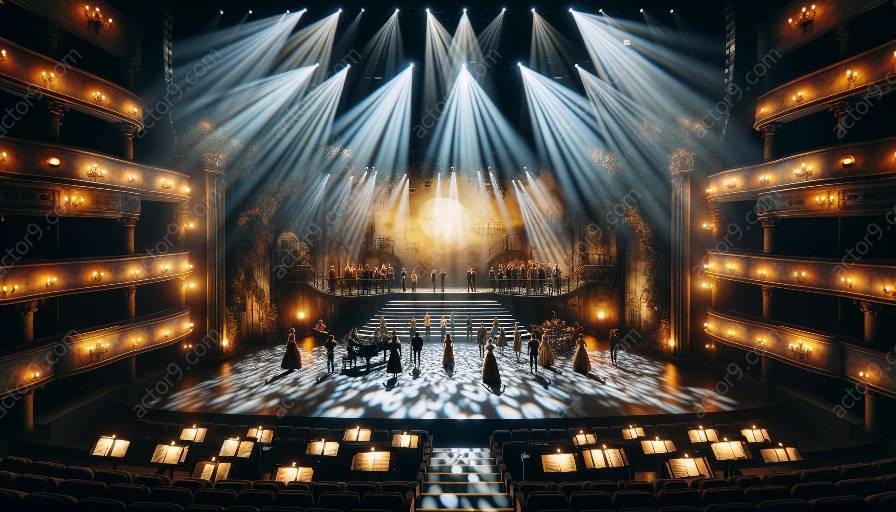When it comes to musical theatre, the role of lighting design is crucial in setting the stage for specific themes and moods. Whether it's a comedy, drama, or fantasy, the lighting design plays a significant part in creating the right atmosphere and enhancing the audience's experience. Let's explore how lighting design adapts to the unique requirements of different musical theatre genres.
Introduction to Lighting Design in Musical Theatre
Lighting design in musical theatre goes beyond simply illuminating the stage; it is an art form that helps convey the storyline, emotions, and overall ambiance of a production. By strategically using various lighting techniques and equipment, lighting designers can transform a theatrical performance and immerse the audience in the world being portrayed on stage. Now, let's delve into how lighting design adapts to specific themes and moods in comedy, drama, and fantasy genres.
Comedy Genre
In comedy musicals, lighting design plays a pivotal role in accentuating the humor, creating visual gags, and highlighting comedic timing. Bright and vibrant colors are often used to evoke a sense of lightheartedness and playfulness. Quick changes in lighting intensity and color can also underscore comedic moments and punchlines, eliciting laughter from the audience. On the technical side, precise spotlighting and well-timed blackout effects help direct the audience's focus and enhance comedic timing, ensuring that the humor lands effectively.
Drama Genre
Contrastingly, in dramatic musicals, lighting design is used to evoke intense emotions, accentuate the tension, and create a sense of depth and complexity. The strategic use of shadows, dim lighting, and color temperatures can convey the somber and weighty themes of the storyline. Lighting cues are meticulously choreographed to mirror the characters' inner turmoil and struggles, effectively drawing the audience into the emotional depth of the performance. Subtle changes in lighting can symbolize shifts in the narrative and intensify poignant moments, leaving a lasting impact on the audience.
Fantasy Genre
For musicals with a fantasy theme, the possibilities in lighting design are boundless. Ethereal and magical elements are brought to life through the use of enchanting colors, dynamic light movements, and otherworldly effects. Lighting designers have the creative freedom to transport the audience to whimsical realms, portraying fantastical landscapes and creatures through innovative lighting techniques. From shimmering fairy lights to immersive projections, the lighting design in fantasy musicals captivates the audience's imagination and contributes to the overall enchanting experience.
Conclusion
Ultimately, the adaptation of lighting design in musical theatre to specific themes and moods exemplifies the versatile nature of this art form. By understanding the nuances of comedy, drama, and fantasy genres, lighting designers can skillfully craft the visual storytelling that complements and enhances the performances on stage, ensuring that the audience is fully immersed in the world of the musical. The careful consideration of lighting design in relation to the themes and moods of different musical theatre genres elevates the overall quality of the production and leaves a lasting impression on the audience.




































